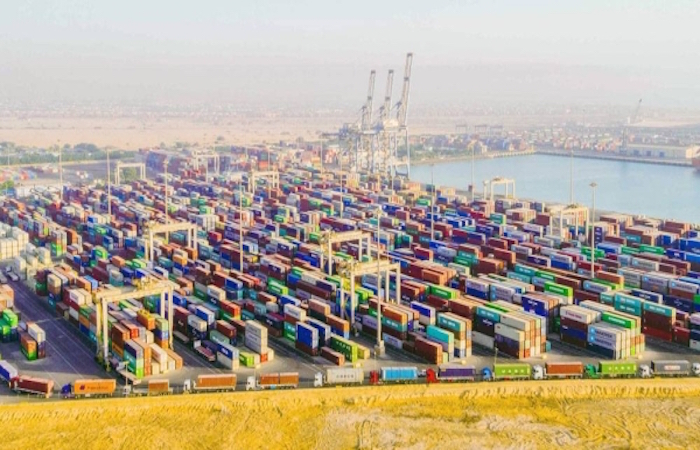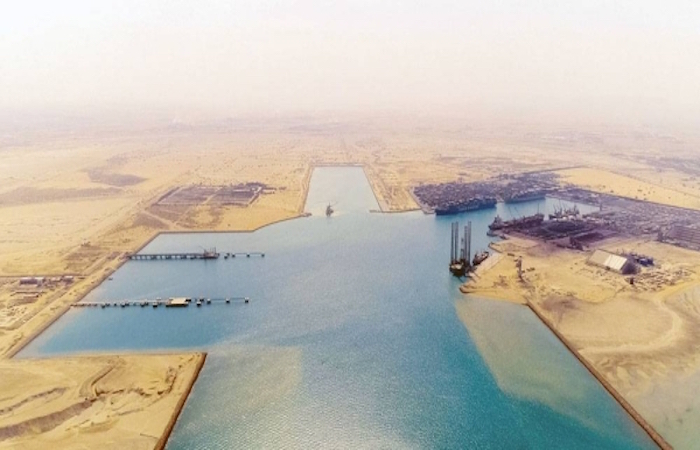
Suez Canal Economic Zone is a gateway for trade between East and West
CAIRO — In line with Egypt Vision 2030, The General Authority for the Suez Canal Economic Zone is sparing no effort to contribute to driving Egypt’s economic growth by making the Suez Canal Economic Zone (SCZONE) a global investment hub and a dynamic export platform — with access to Africa, the Middle East, and Europe.
Among other activities, the General Authority for the Suez Canal Economic Zone is doing so by pursuing a forceful strategy, over the 2020-2025 period, to shed light on the investment opportunities in Egypt’s various economic sectors — especially Maritime, Manufacturing, ICT, and Energy — while putting in place the ecosystem and regulatory framework required for delivering first-rate services.
This is the gist of the event that will take place this month at Egypt Pavilion at Expo Dubai 2020, under the title of “Integrated Route — One Destination”, to demonstrate SCZONE’s plans to become an international, outstanding economic hub and the destination of choice for investors — by capitalizing on the zone’s advantageous position as a global logistics hub amid international supply chains.
An important question is what is the Suez Canal Economic Zone (SCZONE) doing for the country, the region, and the world?
.jpeg)
The Suez Canal Economic Zone in Perspective
The Suez Canal Economic Zone (SCZONE) is managed by the General Authority for the Suez Canal Economic Zone — an autonomous body with both regulative and executive powers.
SCZONE is situated at a unique location at the heart of the global trade route, around the main international maritime route — “The Suez Canal passageway” — which connects Europe, East Africa, and North Africa via the Suez Canal with the continent of Asia passing through the Arabian Gulf, thereby serving the majority of global trade.
This maritime waterway is vital because it has 20% of the global container trade, and 10% of seaborne trade, with around 18,000 ships passing through it each year.
The General Authority for the Suez Canal Economic Zone is tasked with approving decrees and proposing incentives while having full authority to oversee all areas of operation, staffing, budgeting, funding, partnership development in addition to providing business facilitation services.
The SCZONE aspires to be one of the main logistics hubs in North Africa and the Middle East. This goal is supported by several mega infrastructure projects, especially logistics projects, such as doubling the pathways of the Suez Canal — which leads to minimizing passing time, reducing operational costs, and attracting more vessels and cargo.
With this, the Suez Canal Economic Zone strategically aims to bring businesses from around the region and offer them easy access to the region’s markets and talents.
To achieve this, SCZONE is tasked with creating and sustaining a conducive, favorable business environment to not only enhance new businesses but also support existing investors — helping them to grow and expand as well as providing them with world-class value-added supply chain industrial parks.
In a nutshell, the Suez Canal Economic Zone always pursues an investor-friendly environment that contributes to boosting Egypt’s economic development and achieving the country’s national development plans.
As for the future, SCZONE has the vision to leverage the huge potential of the Suez Canal and the surrounding land for developing an efficient, competitive, and eco-friendly business environment that leads, at the end of the day, to creating jobs for Egyptians.

Competitive advantages of The Suez Canal Economic Zone
Strategically located astride the world’s major shipping lanes, close to the world’s main markets, in a country rich in both land and human resources, the Suez Canal Economic Zone is a huge economic achievement that comprises 4 industrial zones and 6 seaports, spanning over 460 million meters.
The industrial zones are East Port Said Industrial Zone, West Qantara Industrial Zone, East Ismailia Technology Valley, and Sokhna Industrial zone. The 6 seaports are: West Port Said Port, East Port Said Port, Al Arish Port, Adabyia Port, Soukhna Port, and Al Tor Port.
Moreover, SCZONE provides domestic and global investors alike with enormous opportunities in a wide range of sectors.
In the Maritime Sector, SCZONE offers a variety of opportunities in the areas of ports, container terminals, and logistics centers as well as shipbuilding and ship repair.
In the Manufacturing Sector, the Suez Canal Economic Zone offers many opportunities in a broad range of industries, including Pharmaceuticals, Food Processing, Automotive, Textiles, and Consumer Electronics.
With a fast-growing ICT industry in Egypt, the SCZONE is the best place for new businesses to invest in the sector, taking advantage of Egypt’s growing talent pool in the field of IT.
Also, the Suez Canal Economic Zone will offer many opportunities in the development of renewable and clean energy.
SCZONE’s Promising Future
At the event that will be hosted this month at Egypt’s Pavilion at Expo 2020, the session will highlight how the Suez Canal Economic Zone’s future achievements are built on present accomplishments.
Within SCZONE, several existing large industrial sites are poised to become a basis for future development, such as the Tenth of Ramadan Industrial City.
Primary development centers lie along the Suez Canal corridor. In the South, the industrial complex at Ain Sokhna will be built on the existing economic zone and port. In the North, East Port Said will grow as an international transshipment hub that is supported by a large new logistics and industrial area.
Links to the interior will be enhanced with the extension of the inland Ring Road to Ein Sokhna and a major dry port near the Tenth of Ramadan as well as by rail to East Port Said. Cross-canal connections are also under construction to open up the Sinai Region.
Moreover, over the upcoming 15 years, three main economic nodes will have developed, linked to the Egyptian capital, Cairo, and each other by an excellent, top-quality infrastructure. In the longer run, the development emphasis will shift to the East of the Canal and along the inland Ring Road.
All in all, Egyptians should take pride in their country’s historic achievement, SCZONE, which has: 461 Km2 Economic Area, 250 Operational Establishments, USD 18 billion Total Investment Cost (including infrastructure), and 14 Industrial Developers.


























